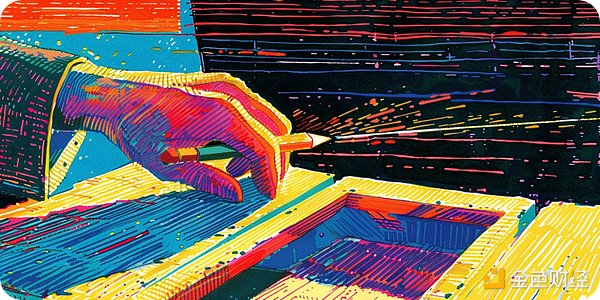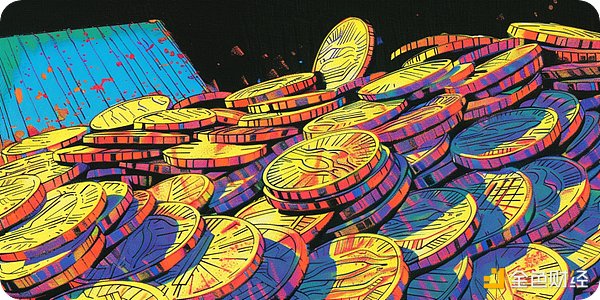Author: NFT Price Floor co-founder Diario, Bankless; Translator: Wuzhu, Golden Finance
Hard Power vs. Soft Power
Most analyses of what makes Layer 1 blockchains superior to other blockchains and what makes a great investment usually emphasize the technical aspects. They often describe innovative and groundbreaking attributes that are considered panaceas that solve all the inherent problems and dilemmas that public blockchains have faced since their inception.
While it is clear that technology is critical, and continuous improvements and discoveries in consensus design, cryptography, and distributed system engineering (hard power) are essential to making this technology accessible to everyone in the world, it is important to remember that blockchain is more than just technology.
In fact, blockchain relies on the belief (concern) of the community, rooted in shared values, culture, and the best universally accessible spirit. They offer everyone the opportunity to participate in an open, optimistic history that is both recorded in the block and held in the imagination of the community. This is what we call the soft power of blockchain.

Blockchains are the ultimate coordination tool, the authoritative ledger where humans can record their digital existence and history. Blockchain is technology, but it is much more than technology. If you judge them only by technical criteria, if you only evaluate their technical features and ignore their soft power, you will miss the bigger picture.
On History, Writing, and Accounting
As Yuval Noah Harari explains in Sapiens: A Brief History of Humankind, humans came to dominate the world because they were able to cooperate on a massive scale, thanks to our unique ability to believe in things that exist purely in our imaginations: stories.
Those stories based on shared belief systems, those cultural artifacts that encode different aspects of human existence, when combined and recorded, produce history.
How do we record history? By writing.

So on the one hand, we can define history as the sum of shared stories that human society has come to agree on their importance and validity. On the other hand, we can affirm that history and writing are intertwined, as there can be no correct history without a recording system.
Let's add another part here. The world's earliest writing, cuneiform, has its roots in an ancient accounting system that used clay marks to track commodities such as livestock and grain in early agricultural societies in the Near East. Originally, these marks represented various commodities, with different shapes representing different items or quantities, such as a cone representing a small amount of barley.
By around 3500 BCE, as cities emerged and economies became more complex, the variety of tokens expanded to around 300 different shapes to cover a wider range of goods produced in urban areas. Interestingly, the final impetus for the development of writing came from Mesopotamian societies’ shared belief in an afterlife.
History, shared beliefs, record-keeping systems, accounting mechanisms, tokens… do these concepts sound familiar to you, Anonymous?
Money and moneyness are shared beliefs
According to Harari above, the human capacity for large-scale coordination stems from our unique ability to believe in things that exist purely in the imagination, such as gods, states, money, and laws.
In other words, large-scale cooperative systems such as religions, trade networks, and political institutions are the result of the unique human capacity for fiction.
In this framework, money can only exist if people share a belief in money as a system of mutual trust. In this sense, Harari’s argument is directly related to the subjective theory of value. The theory states that the value of any good is determined not by the inherent properties of the good, nor by the cumulative value of the components or labor required to produce or manufacture the good, but rather by the person or entity that buys or sells the good.
Due to this concept, the value of an item can rise significantly from the time it is created as it is seen as more valuable or desirable in certain cultural contexts. Many factors influence this evolution, such as changes in age, personal attachment, rarity, etc. In short, cultural relevance.
But why does all this matter?
The Subjective Theory of Value (STV) helps us understand all the stores of value that have been adopted throughout human history, such as salt, cattle, shells, gold, and crypto assets like Bitcoin and Ethereum.
However, only by understanding Harari’s argument about the critical role shared beliefs have played in human history can we truly understand the full power of STV and how it works.
Like human history itself, successful currencies and stores of value are not just the product of an initial, groundbreaking shared belief - they are the product of a network that requires ongoing attention!

Some would say that there is no fun without money. In the case of blockchain, you better make sure your preferred L1 has store of value functionality as a native asset before you claim it is superior to its peers. If it's not good money, it won't have good economic security. Period.
How do you ensure your native asset truly becomes a store of value and not just a fad?
Historical and cultural vitality. The answer lies here.
Blockchain as a Digital Historical Ledger
Remember that a public blockchain like Ethereum or Bitcoin is a shared, decentralized, immutable and uncensorable ledger that helps record transactions and track assets.
In other words, once information is recorded on the blockchain, it cannot be easily altered or deleted. This feature is crucial in preserving history because it ensures the authenticity of the documents or transactions stored on the chain.
We greatly appreciate this ingenious system that allows for trustless management of transactions and balances. But what about the actual history recorded? Isn’t it as important as the underlying technology itself?
In my opinion, absolutely.
The value of Ethereum’s native asset, ETH, comes from its cryptoeconomic properties, according to the rules set by the protocol. However, as we have already pointed out, none of this means anything without a loyal and large community of humans who actually find value in both using the network and storing wealth in the native asset.
The community’s shared belief in the value of the network has given rise to a rich economic history that is recorded on the Ethereum blockchain in the form of a public ledger. It is this rich history, this shared culture of the community, that leads to a positive feedback loop that continually reinforces the value of its native asset, ETH.
History is nothing more than the sum of shared stories of community significance, whose importance is socially agreed upon. In the case of blockchains, their history is a reflection of the social and economic relationships that have developed between community members.
These relationships should be measured not only in quantity, but also in quality, as a reflection of the culture that underpins them:
Is it fair to compare the creation of CryptoPunks and its second-order effects (leading to the development of an entire industry) to the launch of a low-cost NFT series (leading to a temporary craze)?
Can we compare the impact of Uniswap and other 0-to-1 DeFi breakthroughs to simpler 1-to-N protocols that provided incremental improvements and sometimes looked like an excuse to sell tokens?
So while one could argue that all L1s have their own history etched in the form of blocks, unfortunately not all blockchains’ histories are created equal, nor are their impacts on their respective native assets (more specifically, their ability to accrue value and become a store of value in the long term).
Conclusion
L1s have value as coordination tools and decentralized ledgers that can be used to build economies and communities. However, not all blockchains are created equal. Properties such as decentralization, censorship resistance, and trustlessness started out as technical features but evolved into core values (belief systems/shared narratives) that bind communities together.
Without a strong belief in these values and ethos, and without a vibrant, creative community that chooses the blockchain as the home for their projects and the repository of their creations and wealth, a rich and lasting history could not have developed. This shared history attracts new members who will help grow the network. It is this history that provides an asset with an intangible but crucial backing: the trust and continued attention of the community.
Think about Ethereum: Imagine how much it would be worth if Vitalik had not launched it through an ICO and established a foundation to manage it, and how it would have maintained its value in a decade. What if he had not implemented the proof-of-work phase to prevent excessive concentration of tokens? What if his actions deceived others and did not prioritize the best interests of the network? What if Ethereum had not been chosen as its primary home by Larva Labs, Hayden Adams, and many other founders?
The Ethereum community and history would have been completely different. Technology is not the main issue, as it is upgradeable, even when challenged by technical debt. However, history is unrepeatable, irreplaceable, and indelible. Only through a rich and lasting history can a blockchain’s native asset develop a premium!
 Edmund
Edmund







